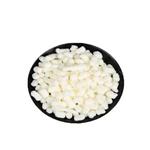Polylactic acid manufacturers
- Polylactic acid
-

- $45.00 / 1kg
-
2025-03-25
- CAS:26023-30-3
- Min. Order: 1kg
- Purity: 99%
- Supply Ability: 20 tons
- Polylactic acid
-

- $6.00 / 1kg
-
2025-03-24
- CAS:26023-30-3
- Min. Order: 1kg
- Purity: 99%
- Supply Ability: 2000KG/Month
- Polylactic acid
-

- $0.00 / 25KG
-
2025-03-21
- CAS:26023-30-3
- Min. Order: 1KG
- Purity: 99%
- Supply Ability: 50000KG/month
|
| | Polylactic acid Basic information |
| | Polylactic acid Chemical Properties |
| Melting point | 262℃(lit.) | | density | 1.25-1.28 g/cm3 | | storage temp. | -20°C | | form | pellets | | color | white to yellow |
| | Polylactic acid Usage And Synthesis |
| Description | Polylactic acid (PLA) is a green, novel, nontoxic, biodegradable, biobased, innovative thermoplastic packaging material. With enhanced strength, transparency, and high elastic modulus, this polymer can be derived from renewable sources like starch and/or sugar. Its glass transition lies between 50 and 80 °C, and its crystalline melting temperature varies from 130 to 180 °C. PLA exhibits a unique, viable, biodegradable substitute for plastics. Generally, bio-decomposition of PLA takes place in approximately 6–24 months, depending on the environmental conditions.
| | Uses |
Polylactic acid (PLA) is an easy-to-process, biocompatible, biodegradable plastic. As such, it is used for medical implants like stents and implantable drug dispensers designed to biodegrade over time. Due to its low melt temperature and ease of use, it is also one of the most widely used 3D printing filaments for fused deposition modelling (FDM). Polylactic acid is guarded for food contact, highly transparent, and flexible to visible light; hence, it is extensively utilized for different applications of food packaging.
PLA fibres display low odour retention and outstanding water-resistant characteristics. In addition, due to its fat and oil resistance and good aroma barrier characteristics, these are popular raw materials for manufacturing thermoformed containers for food packaging.
| | Production Methods |
Polylactic acid (PLA) is an aliphatic polyester with lactic acid as its basic constitutional unit. Lactic acid is obtained from the fermentation of carbohydrate sources like corn, wheat, and potato or agricultural wastes such as whey and molasses, which can produce lactic acid. However, corn is the most preferred biomaterial as it provides superior quality feedstock for the process of fermentation, thereby resulting in the generation of immaculate, pure lactic acid. It can be produced from lactic acid either by polycondensation reaction or through ring-opening polymerization of lactide monomer.
| | Biochem/physiol Actions | Poly(D,L-lactide) is a polyamino acid that has been used to as a coating material. |
| | Polylactic acid Preparation Products And Raw materials |
|